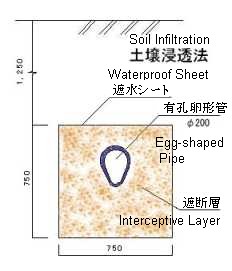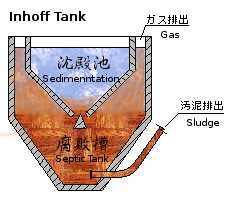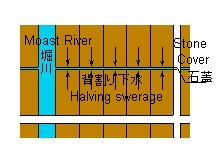- Tasty water
The tasty water workshop of the Ministry of Welfare has announced the five conditions for the sweet water in 1985.
- Hardness is between 10 to 100ppm.
- Free Carbonate is between 3 to 30ppm.
- Evaporation Residuals is from 30 to 200ppm.
- Residual Chlorine is below 0.4ppm.
- Temprature is below 20℃
They say the water under these 5 conditions is sweet.
The components of sweet water opened to the public on the internet are below.
| Name | District | Kind | Hardness | Ca | Mg | Na | K | pH
|
| Natural Water of Niseko | Hokkaido | spring | 24 | 5.8 | 2.7 | 6.9 | 1.5 | 7.4
|
| Namahage Active Water of Oga | Akita | spa | 143 | 38.0 | 12.0 | 91.4 | 5.4 | 7.8
|
| Natural Water of Fujimi Pass | Yamanashi | deep well | 57 | 15.6 | 7.1 | 6.4 | 0.6 | 7.4
|
| Water of Ryujin Hot Spring | Wakayama | hot spring | 74 | 12.0 | 11.0 | 355.6 | 10.8 | 7.8
|
| Spring Water of Kuju Mountain Ranges | Oita | spring | 85 | 17.7 | 11.7 | 12.3 | 4.4 | 6.8
|
| Borsec | Romania | − | 1173 | 310.0 | 97.0 | 57.0 | 12.0 | 6.5
|
- Subsurface irrigation

This is the treatment for the waste water by the micro bacteria in the soil and it has some structural patterns.
The figure is the one of this examples, that was constructed in HUIS TEN BOSCH at Nagasaki Prefecture of Japan.
Waste water flows in the irrigation pipe and percolate through the soil.
To prevent the clogging of soil and to maintain the environment for micro bacteria are important.
This method is better than ordinary biochemical treatment. If we compare the running cost, this new method needs less electric consumption by the less electric devices. The cost for maintenance and management is cheaper.
Therefore, it's easy to maintain and able to save the running cost.
It's possible to set up the complete self-effort toilets, even if in the district where the sewerage system isn't organized.
(Top)
- Septic Tank
Long time ago, the most popular septic tanks were KOEDAME(It`s the pit that is filled by human excrement).
Now, "purification tank" comes under this category.
In the process of sludge treatment, it`s named a digestion tank.
The dissolution of organic matters are promoted by the anaerobic bacteria.
The combination in this septic tank with sedimentation tank is called “Inhof Tank”.
It has the merit to be able to treat the waste water continuously.
It has been exisited at the Mt.Koya in Wakayama Pref. in Japan.

It`s interesting to find the following sentence in the manual of waste water treatment at the hospital in China as to 'Simple biochemical treatment process is the methane gas septic tank and the disinfection.'
It caused the moth flies breeding.
(Top)
- The first flushing toilet in the world
There were flushing toilets at Harappa, Moenjodaro of Indus.
Toilet was by the side of the bath. People relieved themselves on the brick footing.
Wastes were not stored.
Wastes were flushed out with the stored water in a jar.
People who have stayed at Mt. Koya ought to remember that the toilets had no waste stored tanks.
The water has flowed vigorously far under the footings.
I`ve named it “The streaming toilet” by my own idea.
The toilets in Indus would be like this.
(Top)
- Taiko(Prime Minister) Sewerage
 After the battles, Hon-noji and Yamazaki, Hideyoshi who conquered the countries set to built The Osaka Castle. He carried out through the urban-planning for Osaka at the same time.
The distinction of his planning was to considerer that the draining is the most important.
Yoko-bori river from east to west, Doton-bori river, Tosa-bori river, Itachi-bori river and others were constructed as the trunks, and the branches named 'Sewri(divide the residential secton behind the houses) Sewer' divided the towns.
The banks were made with square stones and crushed stones.
The distance had reached to 346km at Edo Era.
After the battles, Hon-noji and Yamazaki, Hideyoshi who conquered the countries set to built The Osaka Castle. He carried out through the urban-planning for Osaka at the same time.
The distinction of his planning was to considerer that the draining is the most important.
Yoko-bori river from east to west, Doton-bori river, Tosa-bori river, Itachi-bori river and others were constructed as the trunks, and the branches named 'Sewri(divide the residential secton behind the houses) Sewer' divided the towns.
The banks were made with square stones and crushed stones.
The distance had reached to 346km at Edo Era.
This 'Sewari Sewer' had been preserved and utilized by Osaka city government.
The modern sewarage system of Osaka City was begun to construct at the beginning of Meiji Era and the 'Sewari Sewer' was included in this system.
(Top)
- Three-field rotation of agiriculture
The main agricultural method before the Industrial Revolution was the three-field rotation. This system was improved on the previous two-field one in the Roman and Greek ages.
The field was divided into three sections. One of them was the land in fallow, next one is for the cultivation in winter(wheat, rye), and the last one is for the cultivation in summer(barley, oats).
They changed each places every three years.
They pastured their farm animals in the land in fallow.
People in Europe used their farm animals` dung in the land in fallow as the fertilizer, not human excrement.
It was necessary to step up the number of farm animals to increase the agricultural products.
Then they needed the livestock feed.
Under the necessity of the labor and the capital for farm animals, the skirmishes of Industrial Revolution were started.
In Japan, human excrement was used as the fertilizer that is suggested by the performance of Gyoki who was the monk, the decree of Keian in Edo and the following argument of Nagayo Sensai who was the welfare director at the Home-Affair Dept in Meiji era.
There is no room for doubt that using human excrements was one of the reasons to retard establishing the modern sewerage system.
"The excrement is the useful property. The human excrement is a kind of asset as the fertilizer, but we shouldn`t drain it into the sewer.
We need to study well the method, how to dip up it.
It`s very important to consider about the unsanitary water draining into the soil.
The unsanitary water is more injurious than excrements."
(Top)